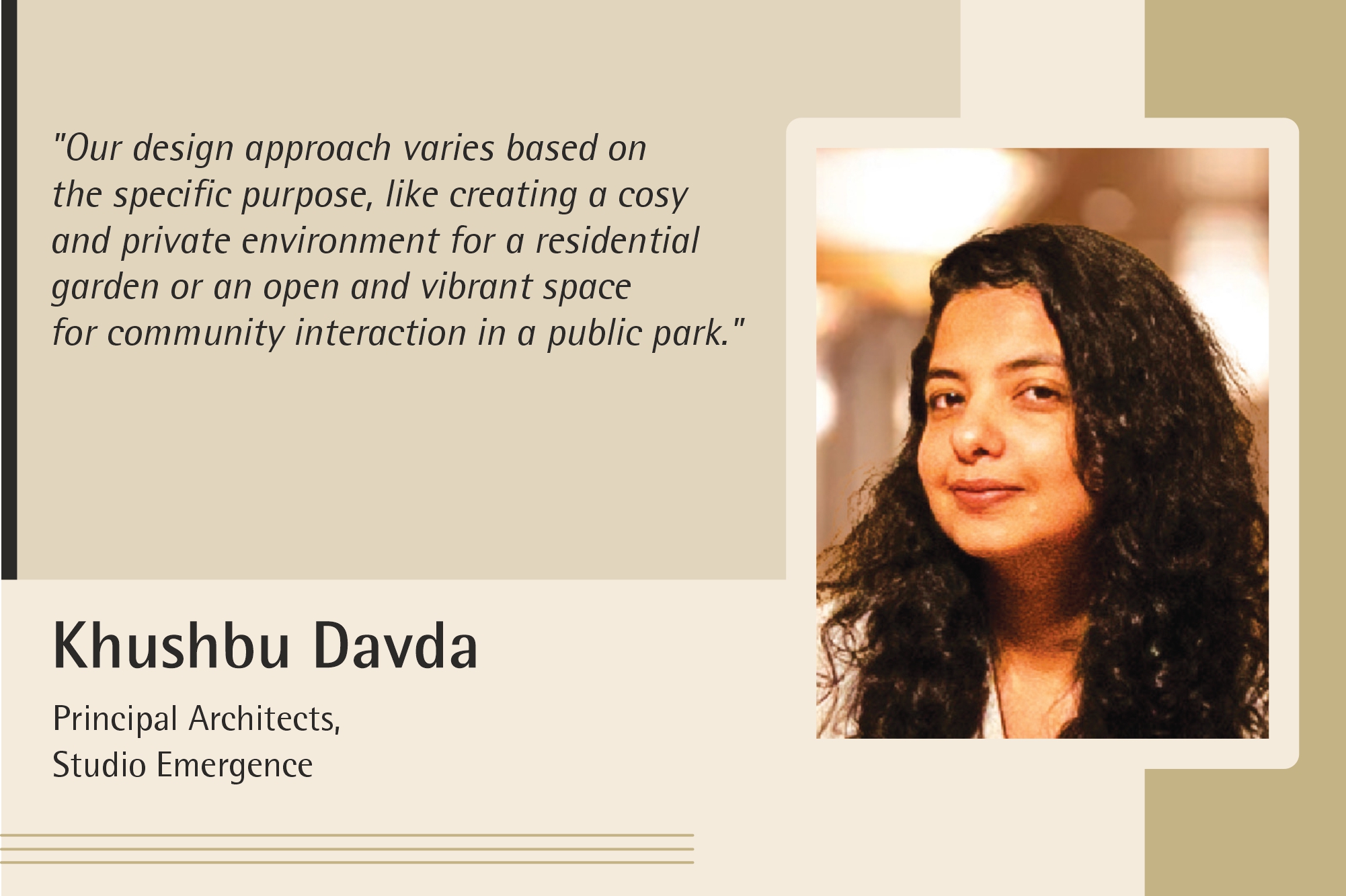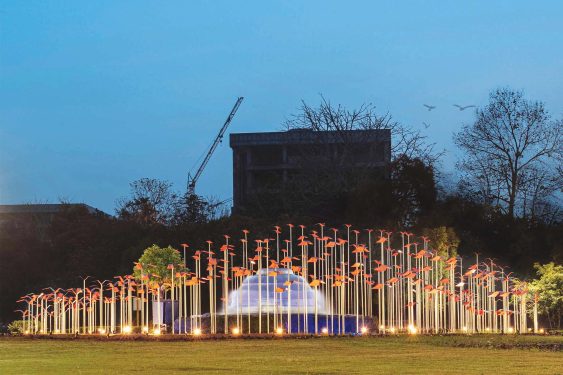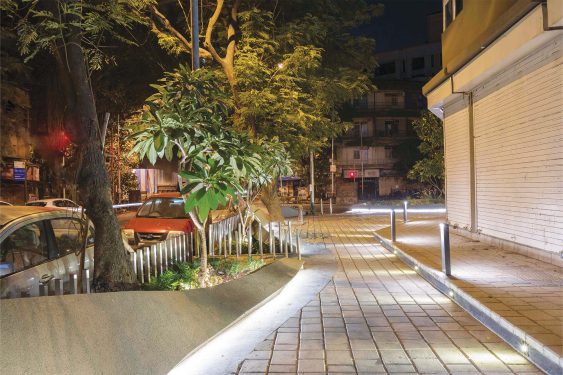Parametric landscape designs

Studio Emergence extends its expertise in landscape architecture, defining the relations between structure and environment with a focus on parametric designs.
Can you provide an overview of your experience working on landscaping projects and highlight some of the key projects you have been involved in?
Studio Emergence pioneers the integration of parametric design in both architecture and landscape projects. Our team utilises algorithmic processes to dynamically respond to environmental factors, user needs, and aesthetics. The Vizag Seat, part of the Nerolac Breathing City Programme, is a functional sculpture that stimulates conversations on improved urban landscapes and public health. Projects like Sugee Sadan in Mumbai analyse social aspects of urban infrastructure, aiming to rejuvenate key junctions. Murmurations, a Breathing Cities Program installation in Chandigarh, embodies sustainability through biomimicry, addressing pandemic-induced worker migration. Our research extends to garden design and master plans for residential projects like Mayfair Gardens in Mumbai.

Studio Emergence extends its expertise in landscape architecture, defining the relations between structure and environment with a focus on parametric designs.
Can you provide an overview of your experience working on landscaping projects and highlight some of the key projects you have been involved in?
Studio Emergence pioneers the integration of parametric design in both architecture and landscape projects. Our team utilises algorithmic processes to dynamically respond to environmental factors, user needs, and aesthetics. The Vizag Seat, part of the Nerolac Breathing City Programme, is a functional sculpture that stimulates conversations on improved urban landscapes and public health. Projects like Sugee Sadan in Mumbai analyse social aspects of urban infrastructure, aiming to rejuvenate key junctions. Murmurations, a Breathing Cities Program installation in Chandigarh, embodies sustainability through biomimicry, addressing pandemic-induced worker migration. Our research extends to garden design and master plans for residential projects like Mayfair Gardens in Mumbai.
What is your approach to integrating landscape design with architectural planning?
We recognise the inherent connection between landscape design and architectural planning. Ensuring the landscape is in harmony with the built form and human scale, our design is informed and responsive to the design brief and user needs. Through parametric and environmental simulations, optimise the design elements to maximise environmental benefits, ensuring a balance between aesthetics and ecological responsibility.
What role does sustainability play in your landscape architecture projects, and how do you incorporate eco-friendly features like rain gardens, green roofs, or water-efficient irrigation systems?
Sustainability is fundamental in our landscape architecture projects, focusing on eco-friendly features like rain gardens, green roofs, and water-efficient irrigation. We optimise rain garden layouts based on computational analysis of factors like catchment areas, rainfall patterns, and soil conditions. Algorithms guide the design of green roofs for energy efficiency and biodiversity. In hot zones, we employ splash pads to increase air humidity. Environmental data informs solar gain simulations, guiding responsible design within the site context. Through data-driven design and environmental analysis, we tailor these elements precisely to promote sustainability, enhancing both functionality and beauty in the landscape.
Landscapes can be tailored to various purposes, from residential gardens to public parks and urban spaces. How do you adapt your design approach based on the intended use of the landscape?
A landscape is primarily designed for the people who use it, considering factors such as materiality, the number of simultaneous users, and the desired atmosphere. Our design approach varies based on the specific purpose, like creating a cosy and private environment for a residential garden or an open and vibrant space for community interaction in a public park. For example, urban spaces, viewed from a larger distance, require careful consideration of vision guides and viewing distances, influencing the overall scale and elements in the design.

Landscapes can be tailored to various purposes, from residential gardens to public parks and urban spaces. How do you adapt your design approach based on the intended use of the landscape?
A landscape is primarily designed for the people who use it, considering factors such as materiality, the number of simultaneous users, and the desired atmosphere. Our design approach varies based on the specific purpose, like creating a cosy and private environment for a residential garden or an open and vibrant space for community interaction in a public park. For example, urban spaces, viewed from a larger distance, require careful consideration of vision guides and viewing distances, influencing the overall scale and elements in the design.
For more details visit: https://studioemergence.in/
Cookie Consent
We use cookies to personalize your experience. By continuing to visit this website you agree to our Terms & Conditions, Privacy Policy and Cookie Policy.










